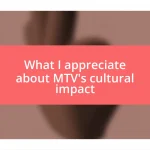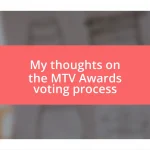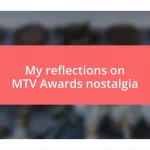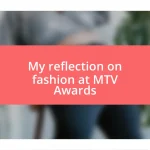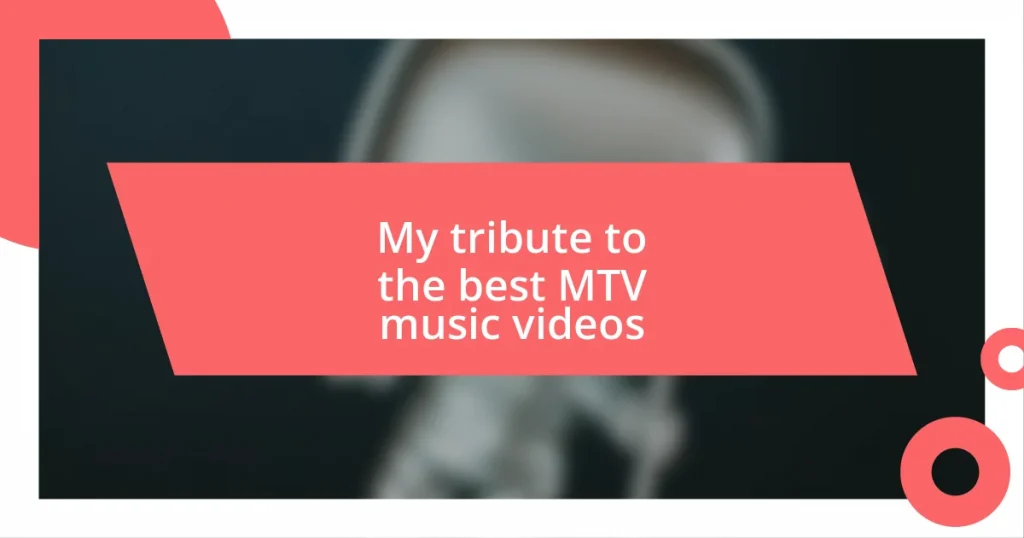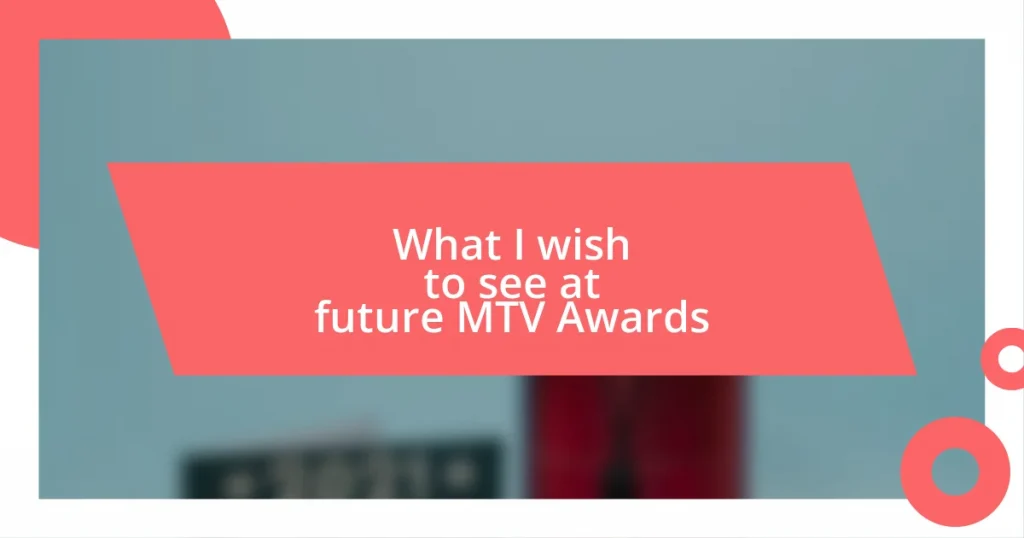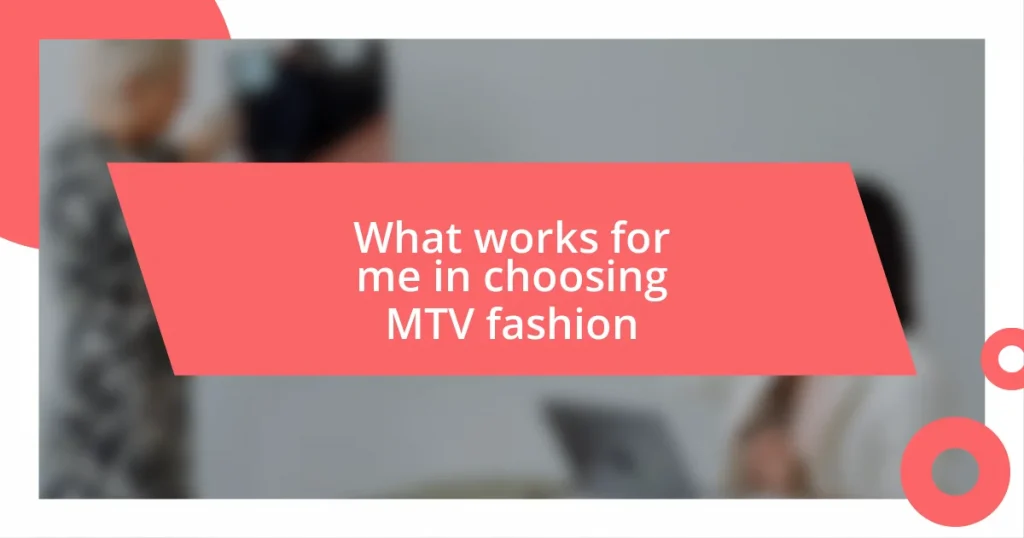Key takeaways:
- MTV music videos revolutionized the music experience in the 1980s and 1990s, blending storytelling, fashion, and dance to influence pop culture.
- Iconic moments, like Madonna’s boldness in “Like a Virgin” and Michael Jackson’s “Thriller” dance, defined eras and sparked lasting conversations.
- Genres such as pop, rock, and hip-hop at MTV showcased visually stunning stories, with each genre uniquely shaping audience engagement and cultural impact.
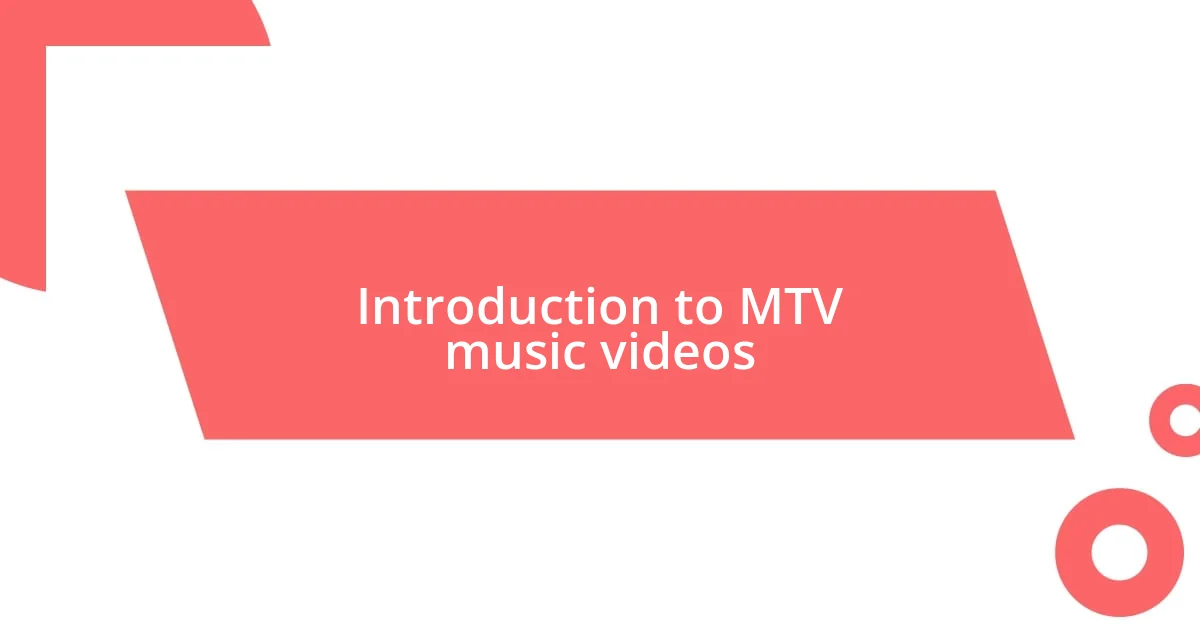
Introduction to MTV music videos
MTV music videos have long been more than just a platform for artists to showcase their songs; they revolutionized how we experienced music during the 1980s and 1990s. I remember rushing home from school to catch the latest video premieres, eagerly anticipating the creativity and artistry that swept through my TV screen. Isn’t it amazing how a mere three to five minutes of visual storytelling could evoke so many emotions?
With their blend of storytelling, fashion, and dance, these videos shaped pop culture in ways that still resonate today. I often think of how a single video could launch an artist’s career or define a generation. It’s fascinating how something so seemingly simple could tap into the essence of society at a given time, creating a shared experience for millions.
As I reflect on those iconic visuals, I can’t help but question: What made certain videos stand out above the rest? For me, it was the combination of memorable hooks, stunning imagery, and the emotional depth that left a lasting impact. Each video felt like a mini-movie, and they still resonate with us, reminding us of moments and memories we might have forgotten.
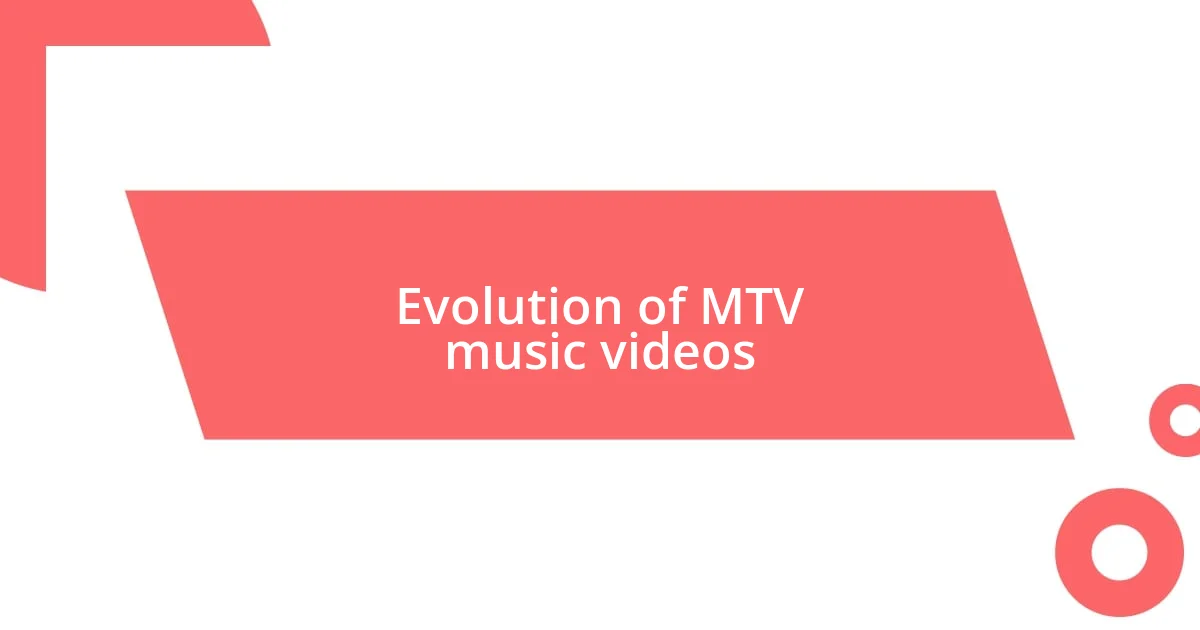
Evolution of MTV music videos
As MTV music videos evolved, they transitioned from simple performance clips featuring artists directly to vibrant, narrative-driven visual experiences. I recall watching “Thriller” by Michael Jackson for the first time—its elaborate storytelling and choreography mesmerized me. That’s when I realized music videos could be cinematic masterpieces, blending music with visual art like never before.
In the early 2000s, the landscape began to shift again with reality and social media influence. Platforms like YouTube allowed artists to bypass traditional media, creating a more direct connection with fans. I remember feeling a sense of empowerment when I could watch my favorite artists’ new videos instantly, sharing them with friends in an instant. The community built around these newly accessible music videos shaped my appreciation for the artists and their messages, evolving the landscape into something more interactive and personal.
Fast forward to today, and we see this evolution continue with high-quality production values and innovative technologies like virtual reality. I can’t help but marvel at how artists now experiment with formats to engage audiences uniquely. No longer confined to TV schedules, music videos are released worldwide at the click of a button, sparking trends and conversations instantly. It’s fascinating how we’ve come full circle, yet the creativity just keeps pushing the boundaries.
| Era | Characteristics |
|---|---|
| 1980s – 1990s | Cinematic storytelling, innovative choreography, cultural impact |
| 2000s | Rise of online platforms, direct fan engagement, reality influences |
| 2020s | High production values, virtual reality experiences, global accessibility |
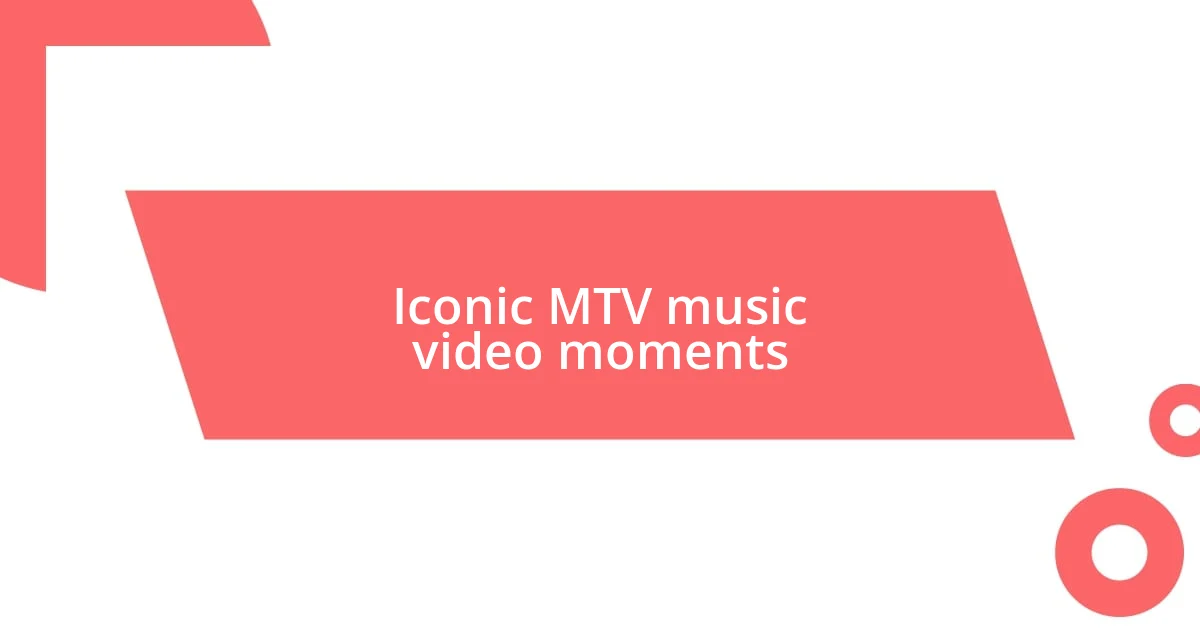
Iconic MTV music video moments
MTV has given us so many unforgettable moments that have left indelible marks on pop culture. One that stands out for me is the moment Madonna boldly rolled around in a wedding dress during “Like a Virgin.” I was stunned by her audacity and flair, capturing the rebellious spirit of the era. It’s these kinds of moments that not only define artists but create conversations that last for decades.
- Michael Jackson’s “Thriller” dance, which inspired countless imitations.
- Nirvana’s “Smells Like Teen Spirit,” introducing a grunge movement that redefined rock music.
- Britney Spears’ unforgettable snake performance at the 2001 VMAs, a moment of pure shock and entertainment.
- Beyoncé’s powerful message of female empowerment in “Run the World (Girls),” showcasing not just talent but a movement.
- The groundbreaking visuals of “Sledgehammer” by Peter Gabriel, which pushed animation and effects to the forefront.
Each aspect of these iconic moments strikes a chord in the depths of my memory, transforming the way we experienced artistry. When I think back on that time, it’s impossible not to feel a sense of nostalgia mixed with respect for the cultural shifts they initiated. Each video was more than just a song; it was a statement, a movement, and sometimes even a revolution.
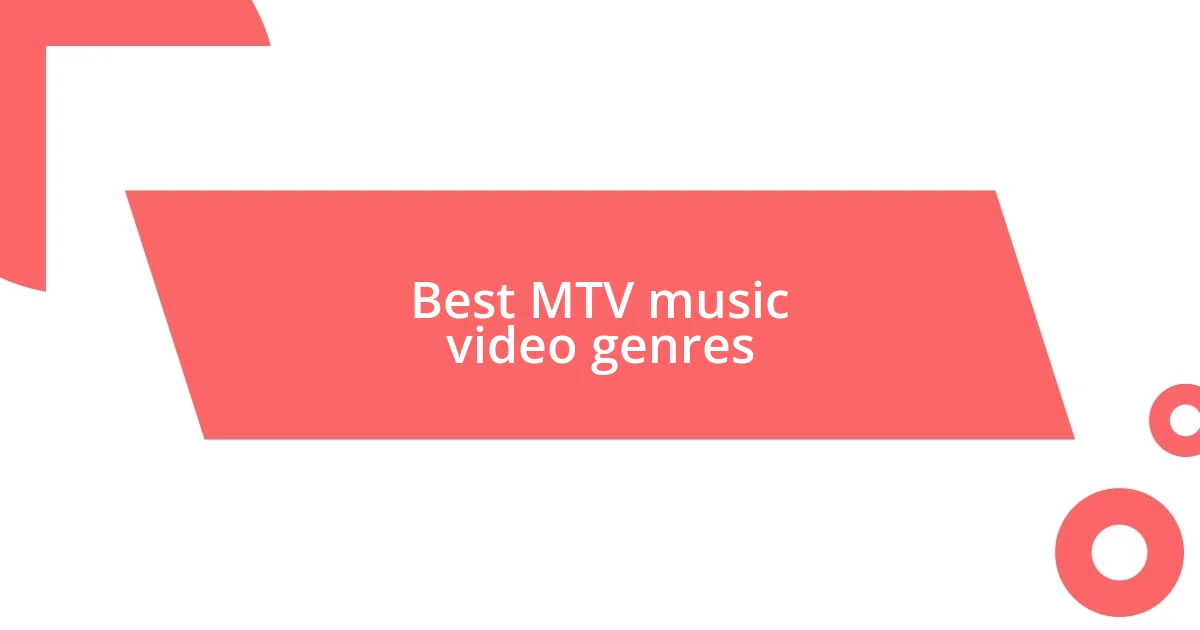
Best MTV music video genres
When we talk about the best MTV music video genres, it’s impossible not to highlight pop music. Pop videos often blur the lines between music and spectacle, creating a feast for the senses. I still remember the excitement I felt watching Britney Spears’ “Oops!… I Did It Again”—the iconic red catsuit, the choreography, and that unforgettable beat. It’s incredible how moments like these made us feel like we were part of something bigger than ourselves.
Rock music videos also carved out a significant place in MTV’s history. They were often edgy and raw, portraying the rebellious spirit of the genre. Take Nirvana’s “Smells Like Teen Spirit,” for instance; I can vividly recall the first time I saw it. It felt like a wake-up call, capturing the angst of a generation with its gritty visuals and powerful energy. This genre showcased not just music but a culture and a lifestyle that resonated deeply with millions.
Then, there’s hip-hop, which transformed music videos into powerful storytelling platforms. Artists like Missy Elliott and Dr. Dre used their visuals to convey messages and showcase their cultural backgrounds. I remember being completely captivated by Missy Elliott’s “Get Ur Freak On.” The blend of innovative visuals and strong lyrics stayed etched in my mind, highlighting how hip-hop could push creative boundaries while addressing meaningful social themes. Don’t you think it’s fascinating how each genre has its unique flair, shaping the way we connect with music?



